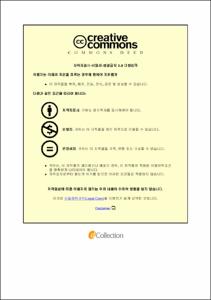A Simple and Accurate Camera-sensor Calibration for Surgical Endoscopes and Microscopes
- Title
- A Simple and Accurate Camera-sensor Calibration for Surgical Endoscopes and Microscopes
- Alternative Title
- 수술용 내시경과 현미경을 위한 간편하고 정확한 카메라-센서간 캘리브레이션
- Author(s)
- Lee, Seong Pung
- DGIST Authors
- Lee, Seong Pung ; Hong, Jae Sung
- Advisor
- Hong, Jae Sung
- Co-Advisor(s)
- Joung, Sang Hyun
- Issued Date
- 2015
- Awarded Date
- 2015. 2
- Type
- Thesis
- Subject
- Camera Calibration ; Hand-eye Calibration ; Surgical Endoscopes ; Surgical Microscopes ; 카메라 캘리브레이션 ; 핸드-아이 캘리브레이션 ; 수술 내시경 ; 수술 현미경
- Abstract
- Augmented reality (AR) has become a key technology for surgical navigation system, which is the technology to overlay virtual objects on real one. In AR system, camera-sensor calibration is one of major factors to affect the accuracy. In order to perform camera-sensor calibration, it has been a common method to move a camera to establish and solve an AX = XB type. However, in the clinical environments, endoscopes and microscopes are commonly used and moving manually those cameras leads to inconvenience and inaccuracy due to heavy weight and large size. In addition, since optical tracking system has spatial error which increases with the distance, moving the camera which requires large motion to make necessary orientations between a calibration pattern and the camera makes the system affected by the spatial error. Therefore, we propose a method to solve the camera-sensor matrix. It is not mathematically strong to the noise, but possible to reduce the effect of the spatial error of optical tracking system effectively, and to provide users more convenient method. The proposed method can be easily performed by mounting an additional marker on the calibration pattern, which produces AX = BYC type formula. Through experiments, we compared the AX = BYC solution with the AX = XB solution in terms of the accuracy. As a result, we found the proposed method is more convenient, accurate, and stable than the conventional method. ⓒ 2015 DGIST
- Table Of Contents
-
Ⅰ. INTRODUCTION 1--
1.1 Introduction to surgical navigation system 1--
1.2 Augmented reality based surgical navigation using external tracker 3--
1.3 Camera-sensor calibration in robotic application 4--
1.4 Problem of camera-sensor calibration in clinical application 6--
1.5 Proposed method 7--
Ⅱ. METHODS 9--
2.1 Camera-sensor calibration 9--
2.1.1 Camera calibration 9--
2.1.2 AX = XB problem 12--
2.1.2.1 Solution using Kronecker product 14--
2.1.2.2 Solution using dual quaternion 16--
2.1.3 AX = BYC problem 20--
2.1.3.1 Procedures for solution of AX = BYC 21--
2.1.3.2 Comparison between procedures 25--
2.1.3.3 Solution using Kronecker product 29--
2.1.3.4 Solution using dual quaternion 30--
2.1.3.4.1 Problem of dual quaternion 31--
2.2 Evaluation of the proposed method 33--
2.2.1 Experimental setup 34--
2.2.2 Data acquisition program 35--
2.2.3 Re-projection error 36--
2.2.4 Survey of the motion range 40--
Ⅲ. RESULTS 41--
3.1 Results 41--
3.1.1 Results of layout1 41--
3.1.2 Results of layout2 47--
3.1.3 Results of layout3 52--
Ⅳ. DISCUSSION AND CONCLUSION 57--
Ⅴ. REFERENCE 61--
APPENDIX A 65
- URI
-
http://dgist.dcollection.net/jsp/common/DcLoOrgPer.jsp?sItemId=000001922114
http://hdl.handle.net/20.500.11750/986
- Degree
- Master
- Department
- Robotics Engineering
- Publisher
- DGIST
- Related Researcher
-
-
Hong, Jaesung
- Research Interests Surgical Navigation; Surgical Robot; Medical Imaging; 영상 유도 수술 로봇; 수술 내비게이션
-
- Files in This Item:
-
 기타 데이터 / 1.35 MB / Adobe PDF
download
기타 데이터 / 1.35 MB / Adobe PDF
download
- Appears in Collections:
- Department of Robotics and Mechatronics Engineering Theses Master



